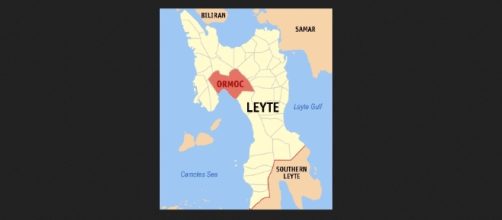At least two people were killed and more than 70 injured by a strong earthquake that rocked the central Philippines province of Leyte on Thursday afternoon, wrecking roads, buildings, and electrical systems, and sending panicked residents fleeing into the streets.
The magnitude 6.5 quake struck at just after 4:00 pm local time and was near the city of Ormoc at a shallow depth of about 6 kilometers, according to data from the Philippine Institute of Volcanology and Seismology (PHIVOLCS) and the US Geological Survey (USGS).
In a press conference late Thursday, an official from PHIVOLCS noted that the shallow depth of the earthquake caused intense shaking, which was felt as far away as the Philippine’s second-largest city Cebu and the southern island of Mindanao.
Roads, buildings damaged
In Ormoc, Mayor Richard Gomez told a local radio station that at least one person was killed by a landslide caused by the earthquake, and that more than 100 people had been injured. Many roads and buildings in the city suffered varying degrees of damage, Gomez said, adding that residents there were “traumatized and hysterical.”
Gomez’s estimate of the number of injured differed from official figures from the national government, however, as the National Disaster Risk Reduction and Management Council (NDRRMC) in an update Friday morning said that two people had been killed and 72 injured throughout Leyte Province.
The most serious damage appeared to have been caused in the town of Kananga, Leyte where one person was killed in the collapse of a three-story commercial building.
Local officials said that six people had been rescued from the rubble late Thursday after having been trapped for more than five hours, but that they were uncertain whether there were others still in the building which housed a grocery store and small hotel.
Kananga Mayor Rowena Codilla told local media that rescue efforts were being hampered by frequent aftershocks and a lack of equipment. Fire officials added that they would investigate why the 10-year-old building collapsed.
The quake also caused significant damage to the area’s electrical grid, as the epicenter was near a switch yard for a major geothermal power plant. Department of Energy officials said power would be restored as quickly as possible, but that residents may be without electricity for several weeks.
Government reassurances
The earthquake struck at a difficult time for the Philippines, as the country’s armed forces are engaged in a major battle with Islamic State-backed militants in the southern city of Marawi on the island of Mindanao.
A force of several hundred militants seized large parts of the city on May 23, prompting President Rodrigo Duterte to declare martial law throughout Mindanao. In a daily briefing on the crisis on Thursday, a military spokesman said that 85 government troops, more than 300 militants, and at least 39 civilians have been killed in the fighting so far.
In the same briefing, a spokesman for President Duterte reassured earthquake-stricken residents of Leyte, saying that the government would provide immediate assistance and urging calm in the area.
Disaster-prone
The Philippines is no stranger to natural disasters, being affected by up to 20 typhoons a year and frequent earthquakes. The country sits on the so-called Pacific “Ring of Fire,” and is crisscrossed by dozens of major earthquake faults.
In February and March, two strong earthquakes within two weeks of each other struck the northern Mindanao province of Surigao, resulting in at least nine deaths and 250 injuries. The biggest earthquake to strike the country in recent years occurred on the central island of Bohol in October 2013; the magnitude 7.1 temblor killed at least 220 people and destroyed many of the province’s famous Spanish-era churches.
Leyte Province is one of the more disaster-prone areas of the country, suffering frequent typhoons, landslides, and earthquakes.
In November 2013, just a month after the disastrous Bohol earthquake, large parts of Leyte were virtually wiped off the map by Typhoon Haiyan (known as Yolanda locally), which is regarded as one of the strongest cyclones ever to hit land and killed at least 7,300 people.
The city of Ormoc was also the site of another of the country’s biggest natural disasters in 1991 when a landslide caused by the passage of Typhoon Thelma killed at least 6,000 people, most of whom were never found.


